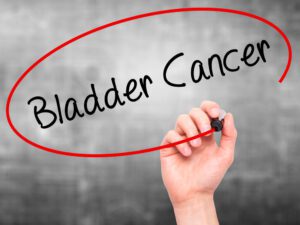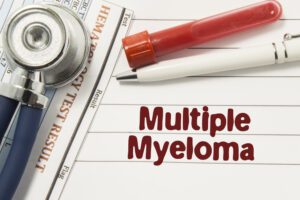Non-Hodgkin lymphoma is a form of cancer.
It usually starts in the white blood cells. These are also called lymphocytes and is how this form of cancer got its name. These cells are part of the immune system.
There are two main types of lymphocytes in the body. B lymphocytes, which are cells that make antibodies. And T lymphocytes which are cells that also play a key role in our immune response.
There are also two main types of non-Hodgkin lymphoma. B-cell lymphomas and T-cell lymphomas. B-cell lymphomas are the most common and make up most cases in the US. Between 85 and 90 percent of non-Hodgkin lymphoma are B-cell lymphomas.
Between 10 and 15 percent of cases in the US are T-cell lymphomas. There is also NK-cell lymphomas which are very rare and infect less than 1% of people with lymphoma.
Each type of lymphoma has a number of subtypes. Below we’ll cover what those subtypes are. We’ll also cover the most common signs of lymphoma to watch out for.
Subtypes of B-cell lymphomas
- Diffuse large B-cell lymphoma (DLBCL)
- Follicular lymphoma (FL)
- Mantle cell lymphoma (MCL)
- Small cell lymphocytic lymphoma/chronic lymphocytic leukemia (SLL/CLL)
- Mucosa-associated lymphatic tissue (MALT) lymphoma
- Mediastinal (thymic) large B-cell lymphoma
- Lymphoplasmacytic lymphoma and Waldenstrom macroglobulinemia
- Nodal marginal zone B-cell lymphoma
- Splenic marginal zone lymphoma
- Extranodal marginal zone B-cell lymphoma
- Intravascular large B-cell lymphoma
- Primary effusion lymphoma
- Burkitt lymphoma
- Primary central nervous system lymphoma
Subtypes of T-cell and NK-cell lymphoma
- Peripheral T-cell lymphoma, not otherwise specified (PTCL-NOS)
- Cutaneous T-cell lymphoma (Sézary syndrome and mycosis fungoides)
- Anaplastic large cell lymphoma
- Angioimmunoblastic T-cell lymphoma
- Breast implant-associated anaplastic large cell lymphoma
- Adult T-cell lymphoma/leukemia (human T-cell lymphotropic virus type I positive)
- Extranodal NK/T-cell lymphoma, nasal type
- Enteropathy-associated T-cell lymphoma
- Hepatosplenic T-cell lymphoma
- Subcutaneous panniculitis-like T-cell lymphoma
- Mycosis fungoides
Signs of Lymphoma
There are a number of potential signs of symptoms of lymphoma. Which signs are present is often related to the subtype of lymphoma present. However, the signs below can also be symptoms of a wide range of other conditions. If you or a loved one have one or more of these signs, it’s important to go see a doctor. Only a trained medical professional will be able to accurately diagnose the cause of these symptoms.
- Enlarged lymph nodes
- Fever
- Chills and/or night sweats
- Loss of appetite
- Nausea or vomiting
- Weight loss (ie losing 10% or more of your body weight in under 6 months)
- Constant Fatigue (feeling very tired)
- Swollen abdomen (stomach)
- Feeling full after only a small amount of food
- Chest pain or pressure
- Headaches
- Shortness of breath or cough
- Severe or frequent infections
- Easy bruising or bleeding
- Rash and/or itchy skin








